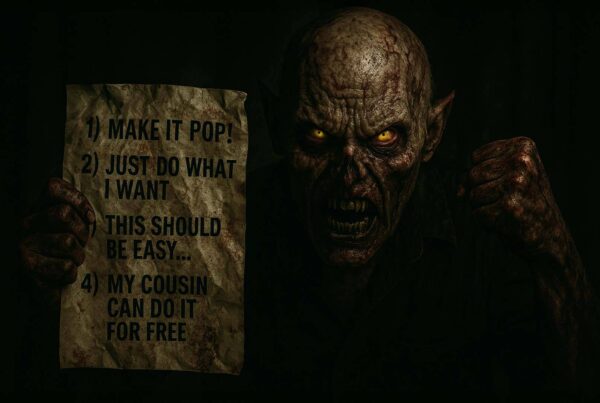Good design has many benefits for your clients. Design can directly impact brand perception, conversion, sales, and the bottom line profits of a company. Part of your job as a designer is to understand how design can impact these things and teach that understanding to your clients.

If a client does not value design and understand the benefits to their business, their budget will be low. If they do understand the value of design and benefits to their business, their budget will be high. This is the problem at the heart of the infamous $50 logos. Clients with a $50 logo budget do not understand how good design can improve their business. Therefore, they are unwilling to allocate sufficient funds to do the job right.
When you are faced with a client who does not appear to value design, there are two things you can do.
Option 1: Use industry data to help teach your clients the value of good design. Did you know these stats?
-
- The top 25% of design-centric business outperform the industry benchmark by as much as two to one. (McKinsey & Company)
- Design-centric businesses increase their revenue 32% faster than industry counterparts. (McKinsey & Company)
- Design-led companies outperform the S&P 500 by 211%. (DMI: Design Management Institute)
- Every dollar spent on UX design brings in between $2 and $100 in return. (DMI: Design Management Institute)
Put these data points in a special place and be ready to whip them out next time you are faced with a $50 logo client.
Option 2: Use your own personal data to share with your clients how designs your business has created have positively impacted your client’s businesses. Here are some data points that I used in my agency sales process.
-
- A food community-based website my agency did for Kraft Foods grew to more than 100,000 active users in the first few months after the launch.
- A brand pivot our agency did for a tech startup generated 70% of their annual sales in the first two months after launch.
-
A social media community we designed and built for FX Networks’ presence at Comic-Con yielded 60,000 posts in the first few hours of launch.
-
A personality quiz we designed and build for ABC’s hit show, Desperate Housewives yielded more than 3,000,000 plays in the first three weeks.
-
A website redesign we created for a photo editing business yielded a 100% improvement in signups, 28% increase in customer acquisition, and 30% increase in order volume, in the first two months.
In order to share data from your work, you must begin gathering data from your work. (No duh?) Every engagement should begin with you collecting current metrics from your client. Metrics that will be valuable to you include traffic (store and/or website), current customer size, current sales volume, conversion rate, cost per acquisition, profit per X, and the list goes on. Don’t get too hung up on what data to collect at the start. Just collect whatever your client may have. (Keep in mind, cheap clients often don’t have any data at all, which makes for a great opportunity to position yourself as an expert and help them begin running their business properly, by tracking data.)
Helping your client understand the value of design begins with you. Learn the industry data and begin tracking performance of your work. This knowledge will empower you to charge higher prices and attract clients who are willing to pay to engage with you in a thorough design process that will yield bottom-line impact and return on investment.












